Monthly economic brief: June 2021
The monthly economic brief provides a summary of latest key economic statistics, forecasts and analysis on the Scottish economy.
This document is part of a collection
Consumption
Consumer sentiment and activity has strengthened as restrictions have eased.
Consumer sentiment
- Consumer sentiment in Scotland has continued to strengthen since the start of the year with the Scottish Consumer Sentiment Indicator rising to -0.2 in May.
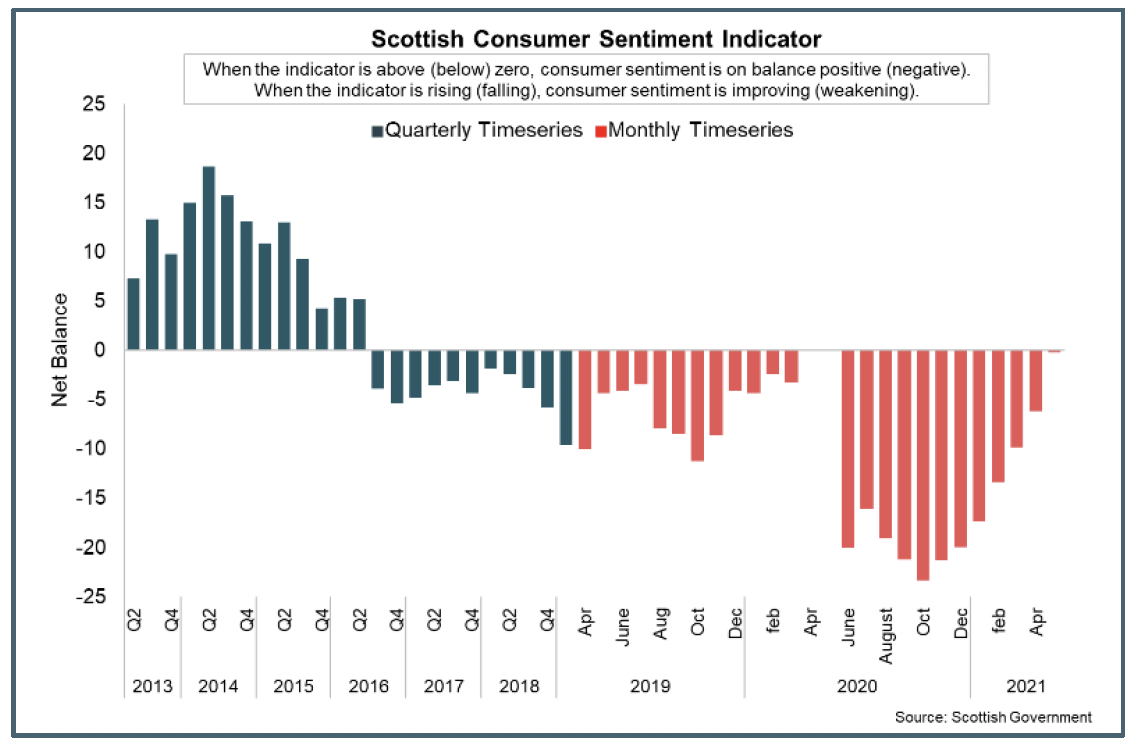
- On balance, consumer sentiment remained negative, however rose above its pre-pandemic level reflecting that consumer sentiment regarding current circumstances has improved while consumers remain positve for an improvement in the outlook for the coming year.[16]
- Sentiment indicators have been highly sensitive to rapidly moving developments on the pandemic over the past year and will be a key factor influencing the pace at which consumption recovers as restrictions are lifted.
Retail sales and visits to retail hubs
- GB retail sales volumes have strengthened since the start of the year and have risen above pre-pandemic levels as retail restrictions have eased.[17]
- Retail sales volumes fell 1.4% in May, having risen sharply by 9.1% in April as restrictions eased, and are 9.1% above the level of sales in February 2020.
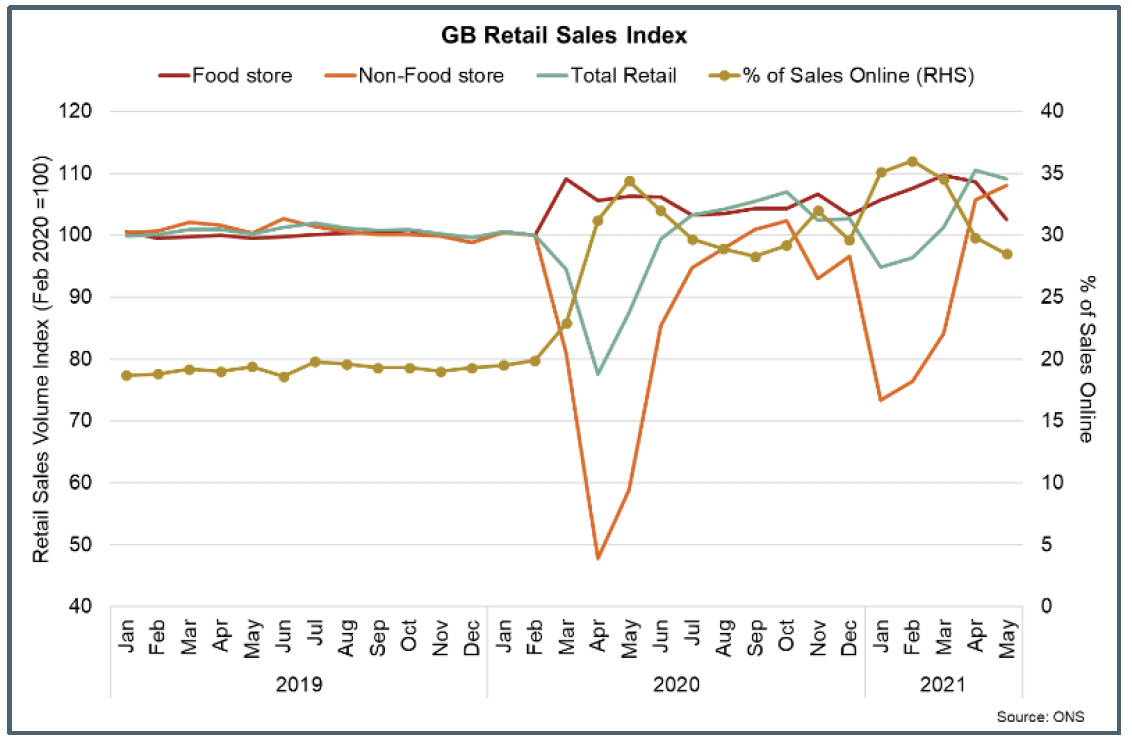
- Food sales fell 5.7% over the month, potentially reflecting some shift to consumption in hospitality venues as restrictions eased, while non-food stores saw a 2.3% growth in sales volumes over the month with the volume of sales 8% higher than they were in February 2020.
- In May, the proportion of retail sales conducted online remained notably higher than prior to the pandemic at 28.5%, compared to 20% in February 2020. The share of sales online fell slightly in May (down from 29.8% in April) with some evidence of consumers returning to physical stores as restrictions eased. Google mobility data for Scotland show visits to retail have strengthened at a more rapid pace since April as restrictions have eased and in June were back to 7% below pre-pandemic levels having been over 60% below at the start of the year.
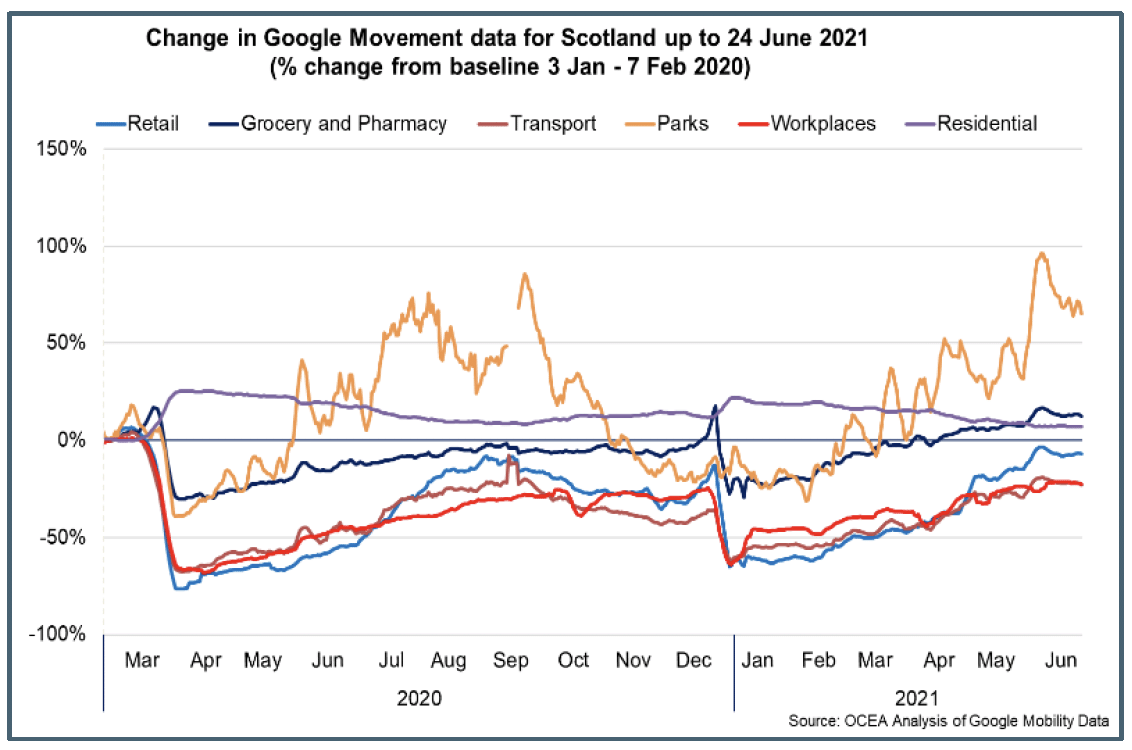
Household Savings and Consumer Credit
- At an aggregate level, household savings have increased significantly during the pandemic and consumers have made significant net-repayments on consumer credit, as restrictions have caused expenditure to fall while support schemes have helped protect household incomes. This has not been the case across the whole economy, with lower income households facing more significant financial challenges. Furthermore, latest data show the pace of savings and net-repayments has slowed in recent months as restrictions start to ease.
- At an aggregate level, net flows from households into deposit-like accounts was £7 billion in May. This is the lowest value since September 2020 and continues the downward trend since January, however it remains notably higher than the monthly average of £4.7 billion in the year to February 2020.[18]
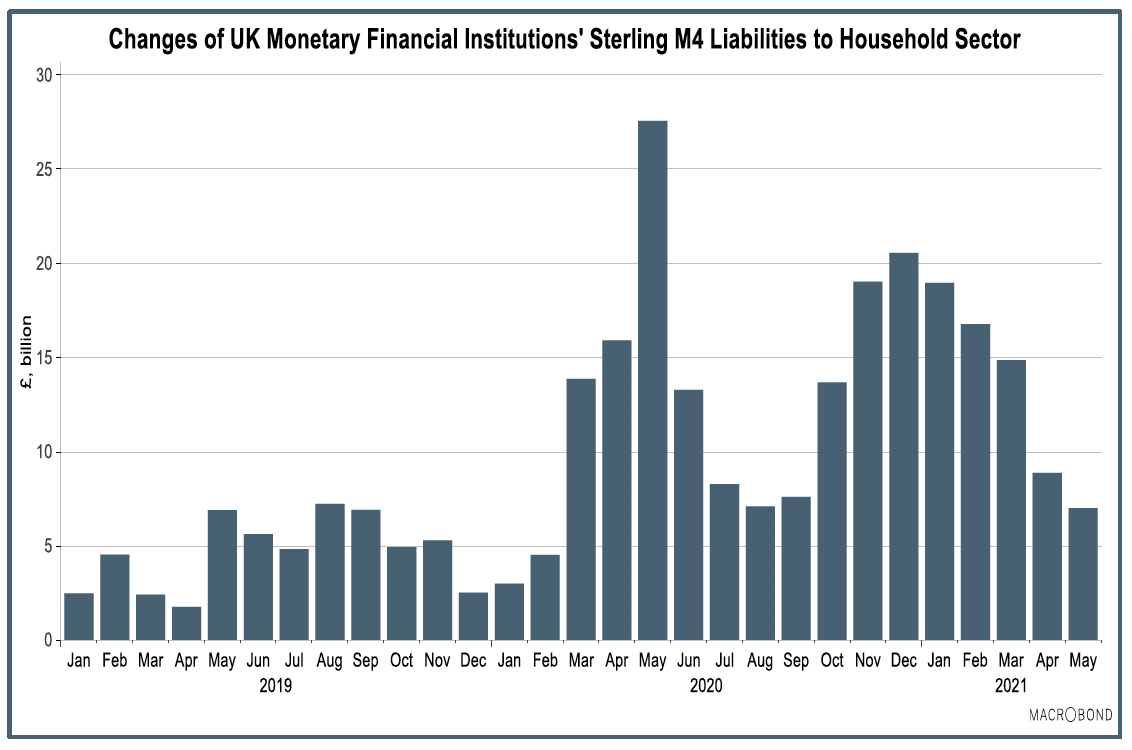
- Consumers have also made significant net-repayments of credit since the start of the pandemic. The pace of repayment has slowed since February and latest data for May showed consumers borrowed more during the month than they paid off for the first time since August 2020.
- The £0.3 billion increase in net borrowing was modest overall and driven by an increase in 'other loans and advances' such as car dealership finance and personal loans which was partially offset by a further net repayment on credit card lending.
- Overall, the extent to which households subsequently spend accumulated savings and increase borrowing as restrictions ease remains uncertain. As the outlook improves, latest survey data show an increasing share of people planning to spend a proportion of their additional savings.[19]
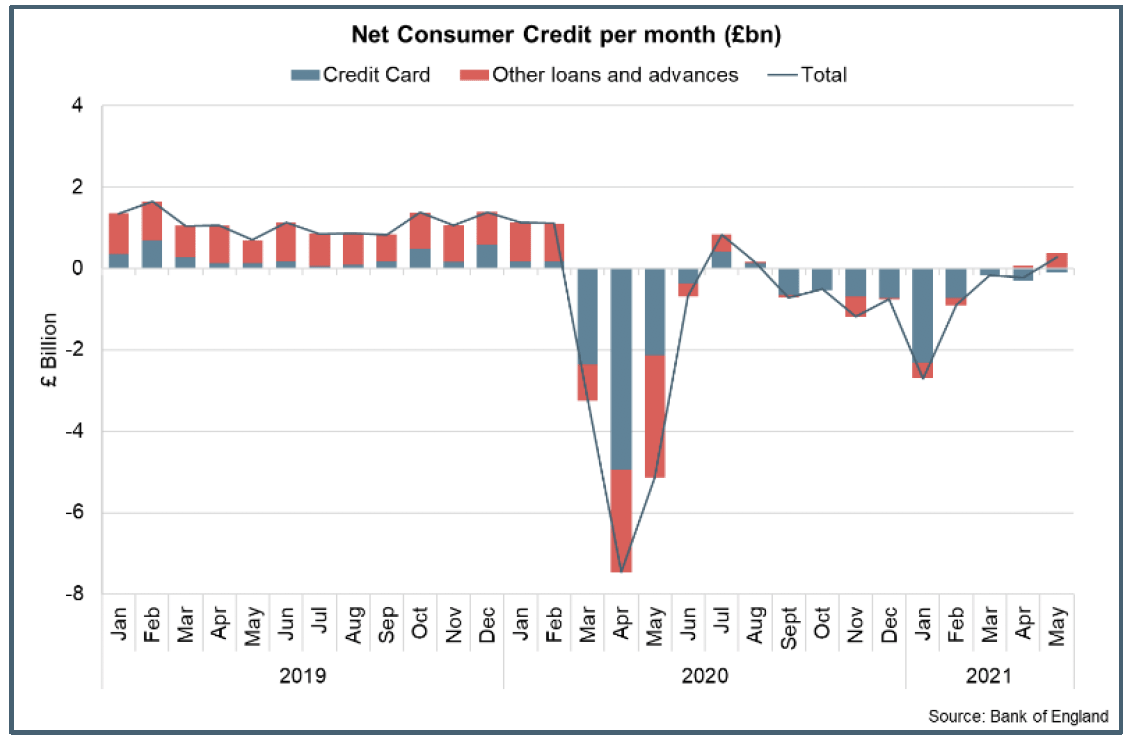
Interest rate and inflation
- The inflation rate has risen sharply in recent months, both in the UK and internationally. The UK Consumer Prices Index (CPI) increased by 2.1% in the 12 months to May, up from 1.5% to April, its highest rate since July 2019.[20]
- The increase in May was driven mainly by transport (motor fuels), clothing and footwear, and recreation and culture goods (e.g. games, toys, hobbies), while there was a smaller upward contribution from restaurants and hotels (meals and sales of alcohol) as restrictions eased. There are some base effects that are continuing to play out in the inflation rate with comparisons to the early stages of the pandemic when lockdown lead to a sharp fall in demand.
- The CPI rate is currently marginally above the Bank of England's 2% inflation target for the first time since July 2019. At their June meeting, the Monetary Policy Committee (MPC) made no change to monetary policy, maintaining the Bank Rate at 0.1% and the current programme of Quantitative Easing.[21]
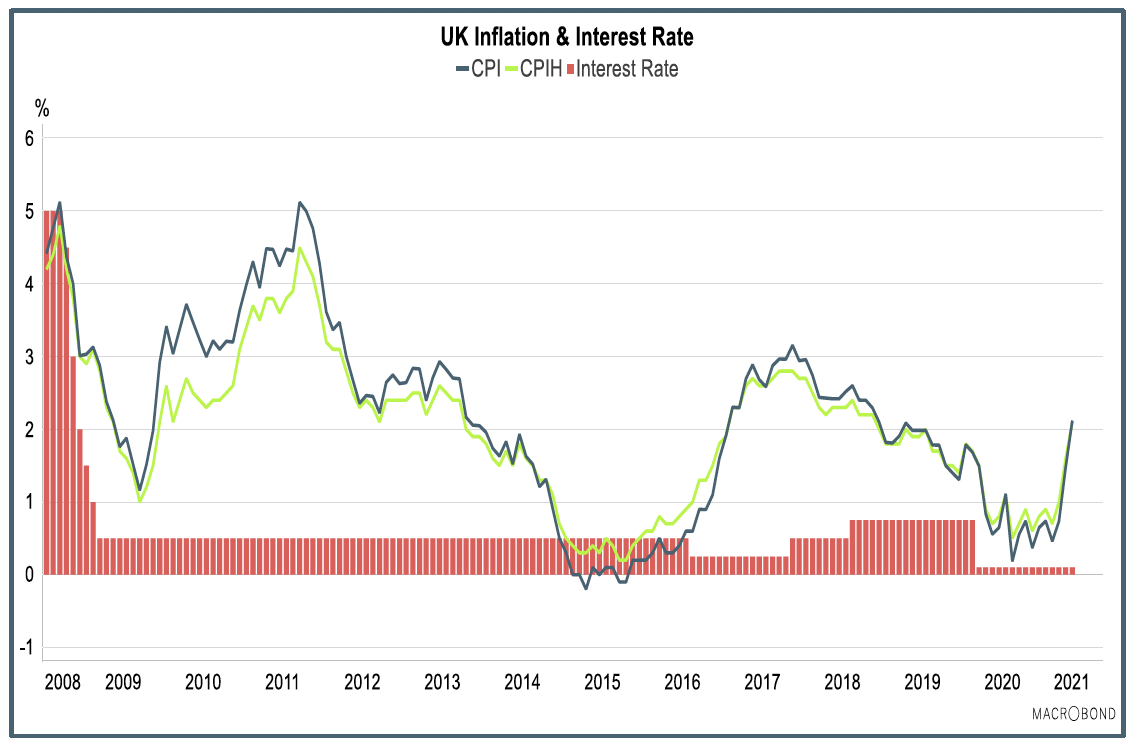
- The MPC expect the inflation rate to temporarily rise above 3% in 2021 before easing back towards the 2% target. This in part reflects the fading out of previous energy price falls while more recent rises in energy prices feed through. On the supply side, business surveys continue to signal increasing input cost pressures (e.g. raw materials) which are expected to pass through to consumers as restrictions ease and demand strengthens.
Contact
Email: OCEABusiness@gov.scot
There is a problem
Thanks for your feedback